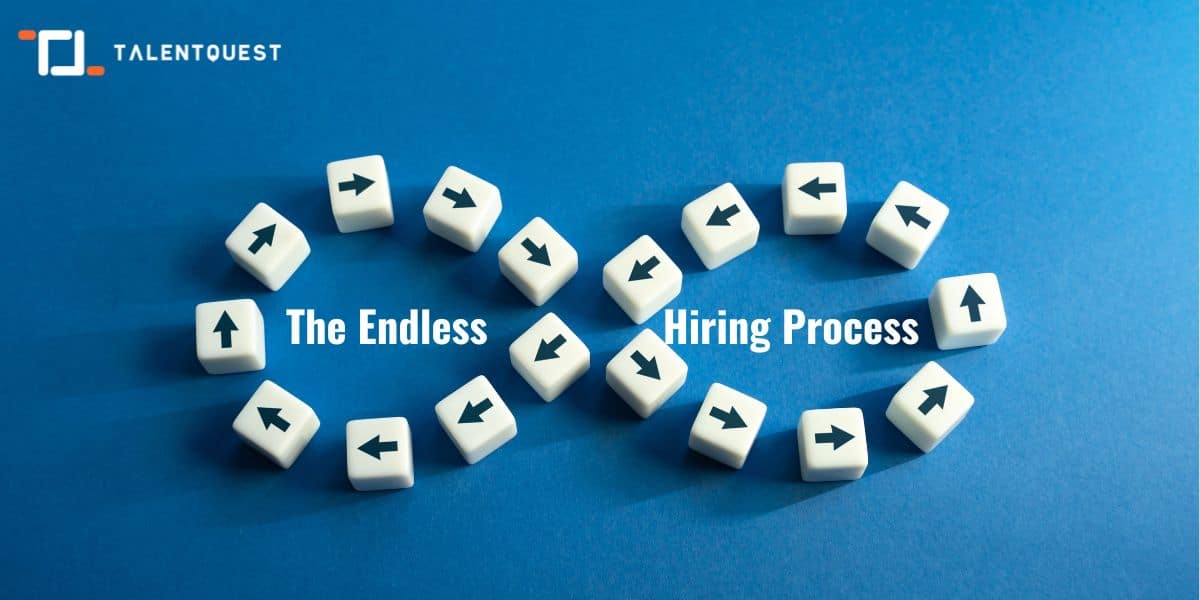
The Endless Hiring Process
In the realm of job hunting, time can be both a friend and a foe. While a thorough hiring process ensures the right fit for both candidates and companies, an excessively long one can lead to frustration, missed opportunities, and even loss of interest.
The Dynamics of A Lengthy Hiring Process
Let’s delve into the dynamics of lengthy hiring processes, exploring their implications for both job seekers and employers.
Candidates’ Perspective:
For job seekers, enduring a protracted interview process can be draining and disheartening. The average duration of 43 days for global hiring, as reported by the Josh Bersin Company and AMS, presents a significant challenge. With each passing day, candidates may grow anxious, questioning their chances and pondering whether to pursue other opportunities.
Moreover, the proliferation of multiple interview rounds, often involving six to ten individuals, adds layers of complexity and uncertainty. Candidates must navigate a maze of assessments, discussions, and evaluations, all while balancing their commitments and maintaining their enthusiasm for the role.
Employers’ Dilemma:
On the flip side, employers face their own set of dilemmas in lengthy hiring processes. While thorough evaluations are essential for identifying the right talent, prolonged decision-making can lead to talent drain and disengagement. The fear of making a wrong hire often drives organizations to err on the side of caution, prolonging the process to gather more data and ensure consensus among decision-makers.
Additionally, economic uncertainties and competitive pressures further exacerbate the hiring conundrum. Employers may hesitate to extend offers in volatile market conditions, fearing potential budget constraints or organizational restructuring down the line.
Implications and Strategies:
The repercussions of prolonged hiring processes are manifold, affecting both candidates and employers alike. For candidates, the prolonged uncertainty may prompt them to explore other opportunities, leading to missed connections and potential talent loss for employers. On the flip side, employers risk losing top talent to competitors with faster hiring cycles, hampering their ability to attract and retain skilled professionals.
To address these challenges, both candidates and employers can adopt proactive strategies:
Candidates:
- Stay Engaged: Maintain open lines of communication with the hiring team, expressing continued interest and enthusiasm for the role.
- Manage Expectations: Understand that the hiring process may take time, but remain patient and focused on showcasing your skills and qualifications.
- Explore Alternatives: While waiting for updates, consider exploring other opportunities to diversify your options and minimize dependency on a single role.
Employers:
- Streamline Processes: Identify bottlenecks and inefficiencies in the hiring process, streamlining procedures to reduce time-to-hire without compromising quality.
- Communicate Transparently: Keep candidates informed about the timeline and status of their application, ensuring clarity and managing expectations effectively.
- Leverage Technology: Embrace digital tools and platforms to automate administrative tasks, facilitate collaboration among hiring stakeholders, and enhance the overall candidate experience.
Navigating lengthy hiring processes requires a delicate balance between thorough evaluation and timely decision-making. By fostering transparent communication, embracing innovation, and prioritizing candidate engagement, both candidates and employers can adapt to the evolving dynamics of the job market, ensuring a smoother and more efficient hiring journey for all stakeholders involved.
